Inside the Most Exclusive High-Powered Rocketry Event in America
Credit to Author: Daniel Oberhaus| Date: Mon, 02 Oct 2017 16:00:00 +0000
“We might be digging a hole to get at this thing, man,” Joshua Allen told me as we barreled across Nevada’s Black Rock Desert in the back of a covered pickup truck.
Allen and his peers from Oregon State University had just launched their homemade rocket at Big Ass Load Lifting Suckers (BALLS), an annual gathering of rocketeers that showcases the most powerful amateur rockets in the US. It was their first time at the event, held late in September, and they hoped that their two-stage rocket would fly to 100,000 feet, about one-third of the way to space proper. The Oregon State students, many of whom graduated in May, had spent the last year designing, building, and testing the rocket we were hunting from a pickup. Allen estimated that it contained over $20,000 of purchased and donated materials—and after a malfunction during its flight, he wasn’t sure they would recover it in one piece, if at all.
Every September for the last 27 years, the Tripoli Rocketry Association—one of the two amateur rocketry groups in the US—has hosted BALLS as a showcase of the rockets built by people like Allen that are too powerful to be safely flown anywhere but the middle of the desert. Black Rock is a well-worn stomping ground for amateur rocketry due to its expansive, barren lake bed that lacks any signs of life or flammable materials. This was the location that the first civilian team launched a rocket into space in 2004 and is frequented throughout the year by local high-powered rocketry groups in the southwest.
In order to bring hundreds of rocketeers together for a weekend of punching holes in the sky, Tripoli must obtain a flight waiver from the Federal Aviation Administration that allows the organization to fly over 100,000 feet. It’s the highest flight waiver granted to amateur rocketeers by a federal administration anywhere in the world.
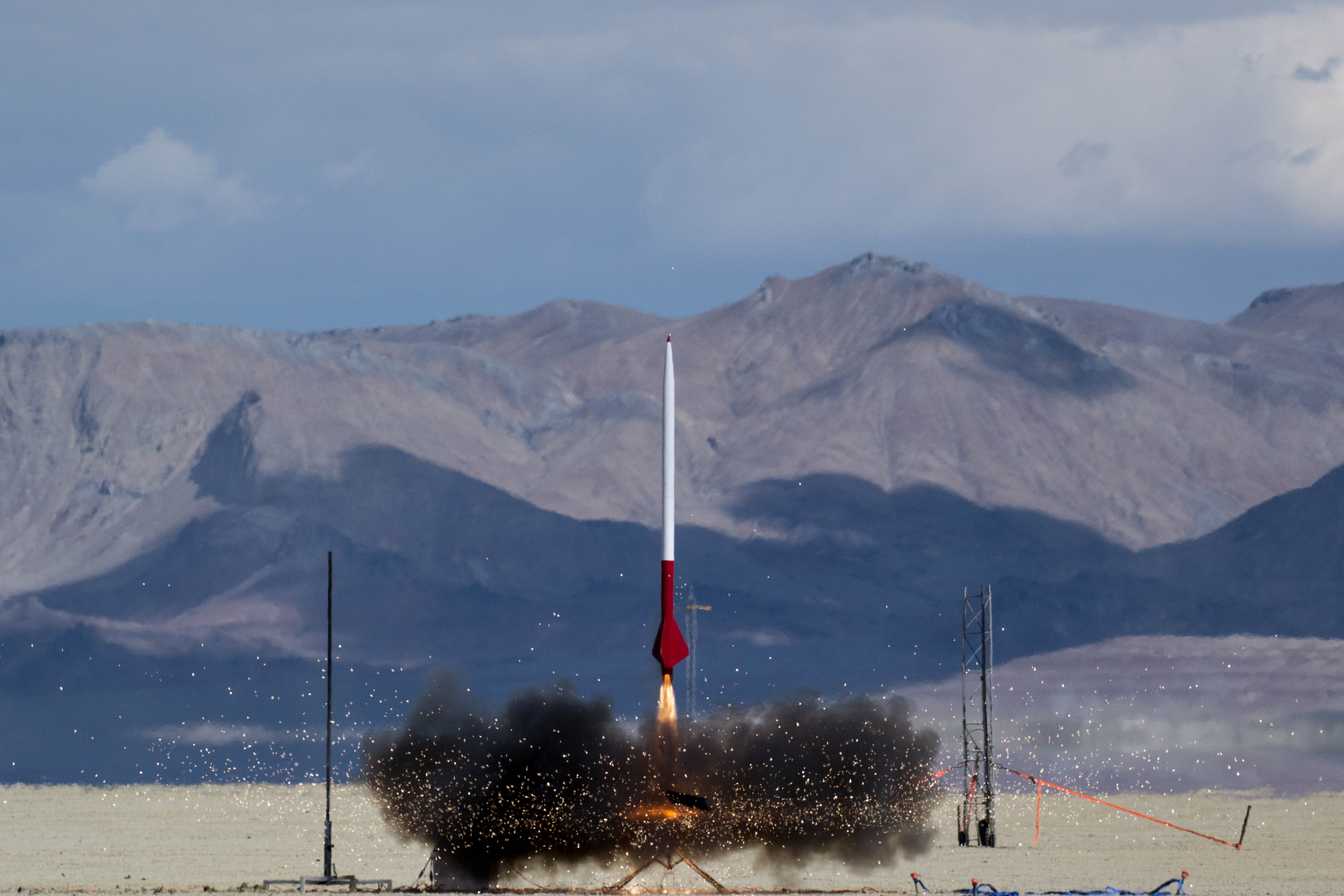
Earlier that morning, Allen and the rest of the Oregon State team was scrambling to put the finishing touches on their rocket in near freezing temperatures so it could make its launch window for later that afternoon. After they registered the rocket for flight with BALLS officials, most of the team hung around the campsite while Allen and a few other members trucked the rocket to the away cell, a launch pad a few miles off from the spectator area that is reserved for the most powerful rockets at the event.
The team waited in a tense silence as the countdown to ignition reached zero, but the telltale plume of smoke on the horizon that arrives a few seconds ahead of the roar from the rocket engine never appeared. Something had gone wrong.
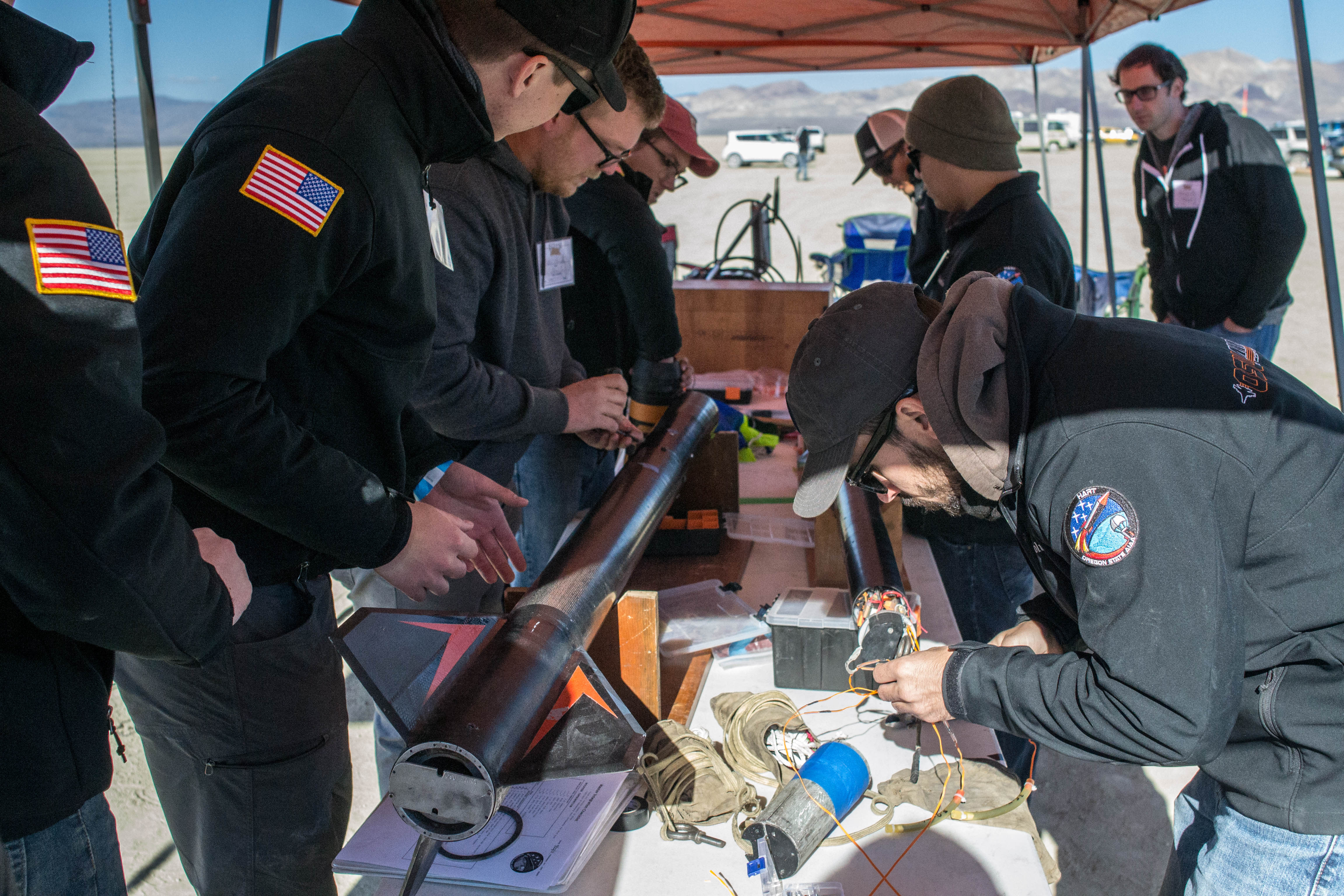
After some back-and-forth on a radio with their team members at the away cell, whatever ignition problems the rocket had experienced were fixed and the team was ready for another shot. This time, when the countdown reached zero, a bright white trail of exhaust made a beeline for space. The team members were exuberant, but the celebration didn’t last long—they had stopped receiving telemetry data from the rocket mid-flight.
“Someone stomped on our signal,” one of the Oregon State students said, referring to whoever in the campsite was using the same radio channel the team had reserved to track their rocket’s flight. Without this signal, it would be exceedingly difficult to tell just where the rocket landed in the barren 400-square-mile lake bed, or if it had landed safely.
If they were unable to recover the rocket, the Oregon State students would lose the valuable onboard data that would tell them if their rocket had made it to 100,000 feet.
*
Malfunctions are par the course at BALLS, which is one of the only opportunities amateur rocketeers in the US have to experiment with new designs and technologies.
Although any rocketeers hoping to demo their rocket at BALLS must show that it’s flight-worthy on paper, the gap between theory and practice is readily seen at the event, where it’s not uncommon for a rocket to tear itself apart on ascent.
But for every unsuccessful launch, dozens of other rockets are sent screaming toward the stratosphere in an attempt to push the boundaries of what’s possible in amateur rocketry ever farther.
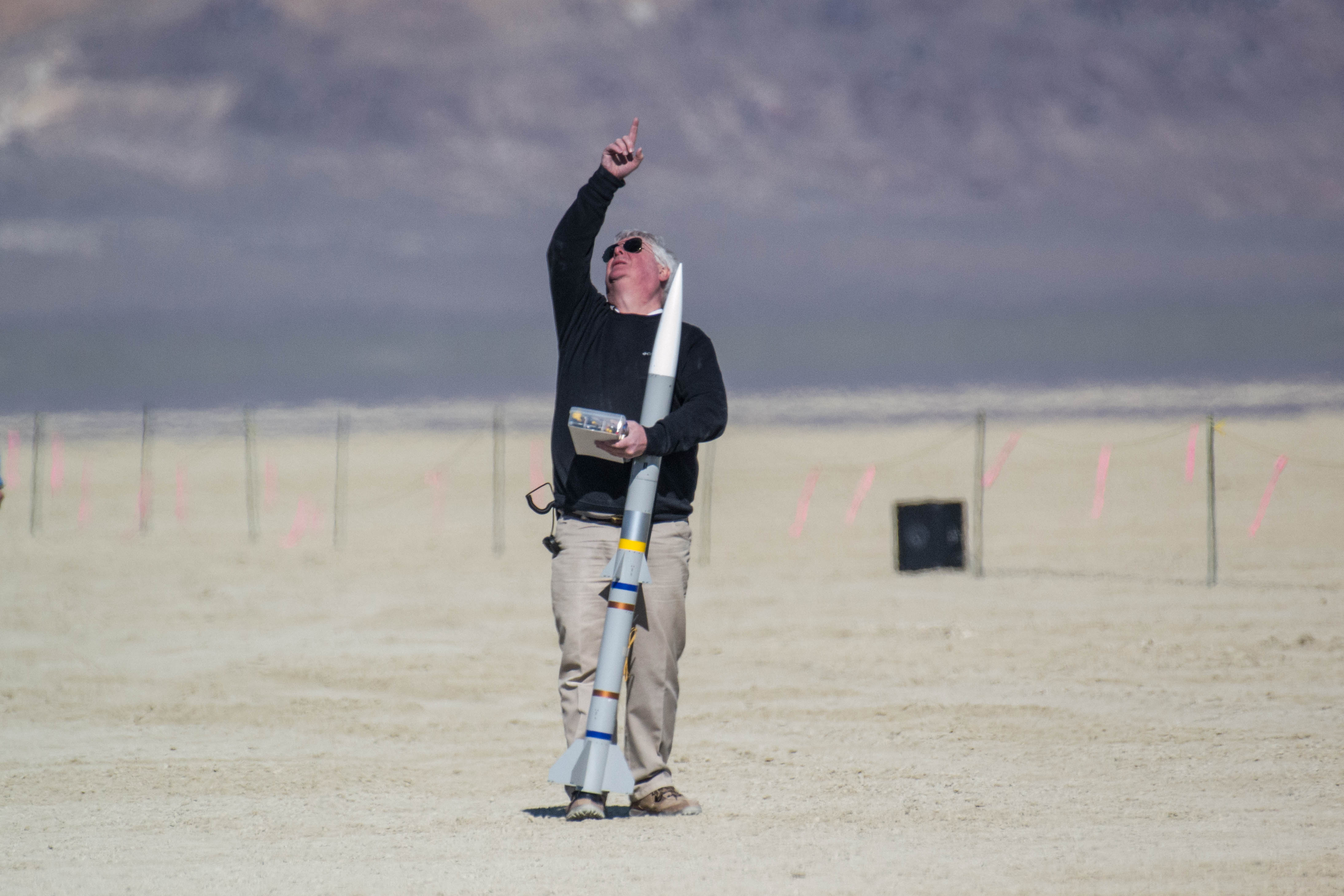
BALLS is generally closed to the public and media, but as a Tripoli member I reached out ahead of time to the event’s organizer, Tom Blazanin, asking if I could attend. Blazanin told me that media coverage was “not approved” but that he was open to letting me cover the event on the condition that I find him at the event so he could set ground rules for my attendance. However, I was unable to find him after several attempts. I was also unable to reach Blazanin via email after the event. Despite Blazanin’s reluctance to allow media coverage of the event, all of the attendees I spoke to were happy to discuss their rockets with me when I identified myself as a journalist.
Restrictions on public and media attendance means the event is small by design—this year about 200 rocketeers from all around the United States were in attendance. The risks posed by malfunctions are part of the reason why attending BALLS is strictly reserved for the Tripoli rocketeers with the expertise to make big rockets fly. Indeed, BALLS advertises itself as “a venue for projects that should not be flown publicly due to safety or legal restrictions,” so its emphasis on exclusivity makes sense. This is the event where large rockets flying on homebrewed motors go to be tested and despite Tripoli’s extreme emphasis on safety precautions, accidents do happen.
This year, two rockets malfunctioned during flight. One spiraled over the spectator area and landed a few hundred feet away from the rows of RVs and tents. Another rocket’s parachute didn’t deploy correctly and the booster returned to terra firma unimpeded, ultimately burying itself three-and-a-half feet in the Earth about 100 feet away from spectators. Despite the inherent danger to these activities, however, over the course of its 27-year history, no attendee has been mortally injured at BALLS.
*
As we tore across the Black Rock Desert in search of the rocket, Allen broached a theory of what had gone wrong.
“Last launch we over-pressurized the sustainer and blew out the motor,” Allen said. “But this time it sounds like the motors might have functioned but the recovery system may have failed.”
In other words, there was a good chance the rocket came back to Earth ballistically, without a parachute to slow its descent.
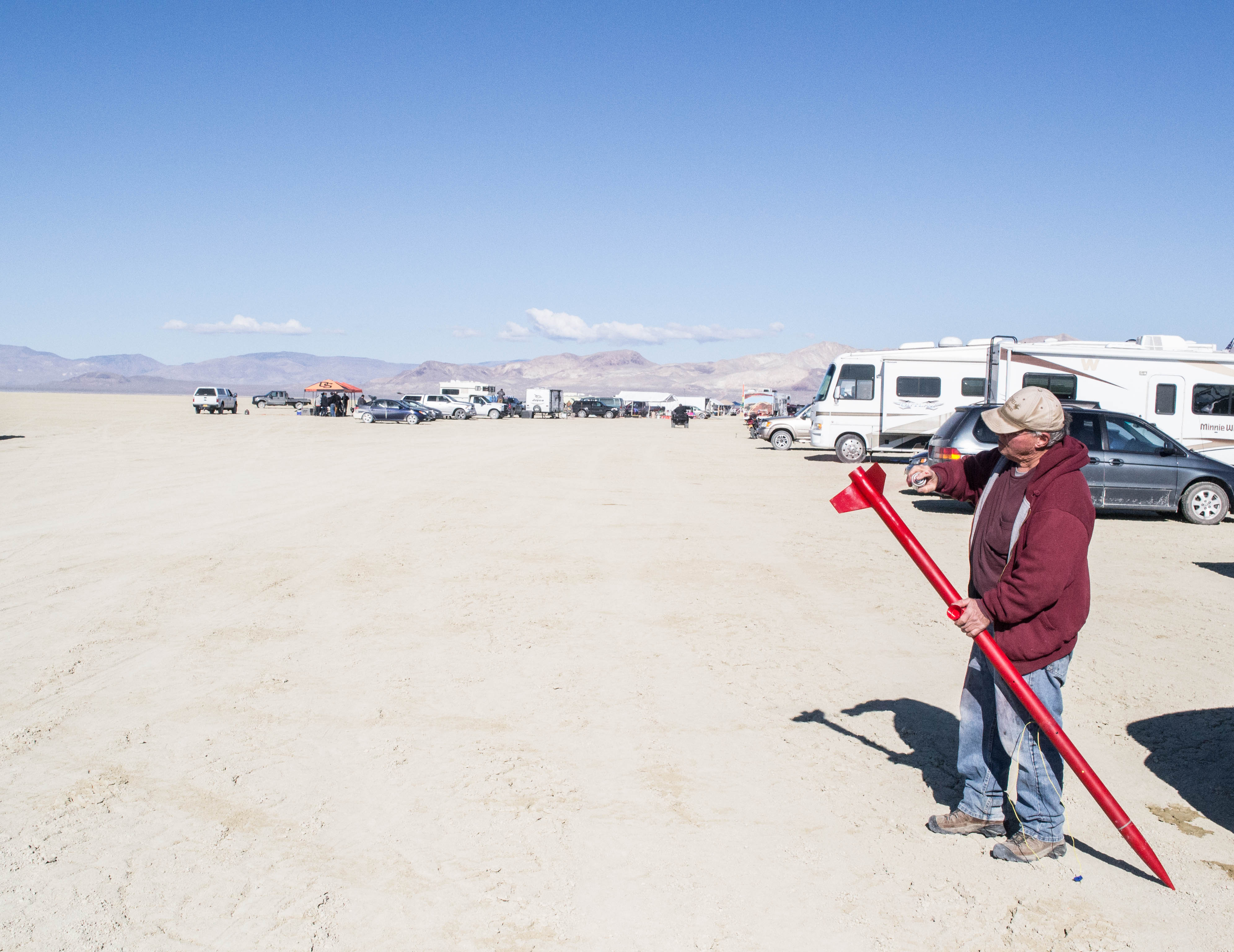
Allen didn’t have to wait long for an answer. We had been driving along the estimated trajectory of the rocket in the hopes that we would come across some remains, or if we were lucky, an intact rocket booster or sustainer. After a 20-minute search, one of Allen’s peers spotted the upper stage of the rocket and the tattered remains of its parachute.
The sustainer had a small tear down its side where the parachute cords had ripped through the body, and the shock cords on the parachutes had broken. The rocket sustainer was made of a fiberglass blend and the parachute cords were certified to a tensile strength of 5,000 pounds, so the damage they had sustained was a testament to the extreme forces experienced by the rocket during its return to Earth, and offered some clues to the nature of its malfunction.
“After the booster separated and the sustainer ignited, we think it turned sideways while still under propulsion,” Allen said. “Since it’s going sideways, that would tell most of the on-board hardware to deploy the parachute. So if the sustainer is going Mach 2 sideways and deploys a parachute, the parachute is going to come out and rip through the body. It was going really fast.”
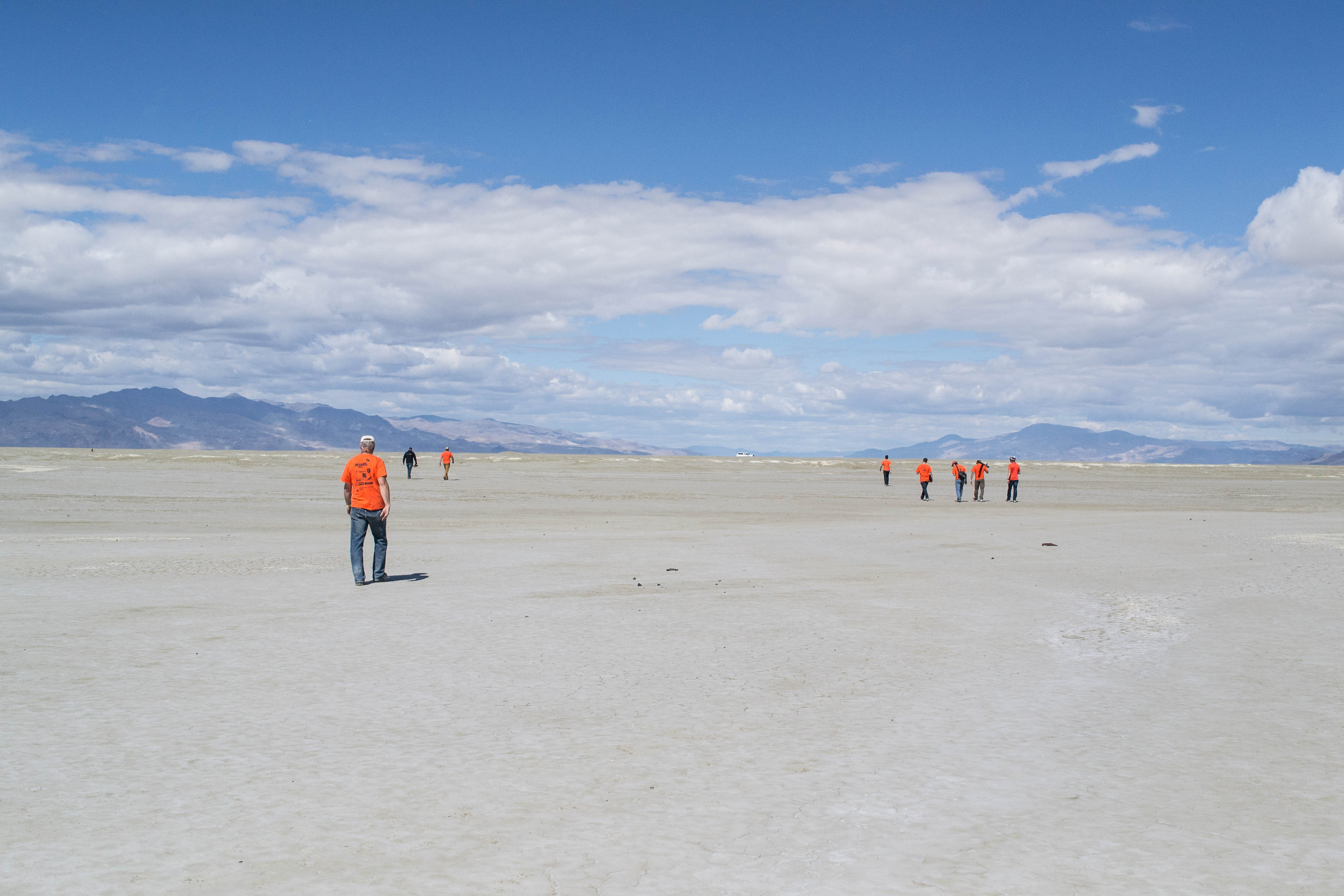
About half-a-mile away from the sustainer, the Oregon State team located the booster, the lower stage of rocket. The avionics inside the sustainer would tell the team the maximum speed reached by the rocket as well as its apogee. Only a few months before BALLS, the Oregon State team had demoed this same rocket at Spaceport America in New Mexico during a collegiate rocketry competition. Their upper stage had failed during the Spaceport demonstration and the team had spent all summer working on improvements.
All that was left to do was go back to the campsite and run a post-mortem on the rocket to see what had gone wrong with the upper stage this time.
When I visited the Oregon State mission control tent later that afternoon, I was approached by one of the team members. The rocket hadn’t made it to 100,000 feet, he said, but it had reached a peak altitude of 79,000 feet and peak speed of Mach 2.3 (nearly 1,800 miles per hour). Still, the student was all smiles. “We just doubled our school’s record,” he told me.
*
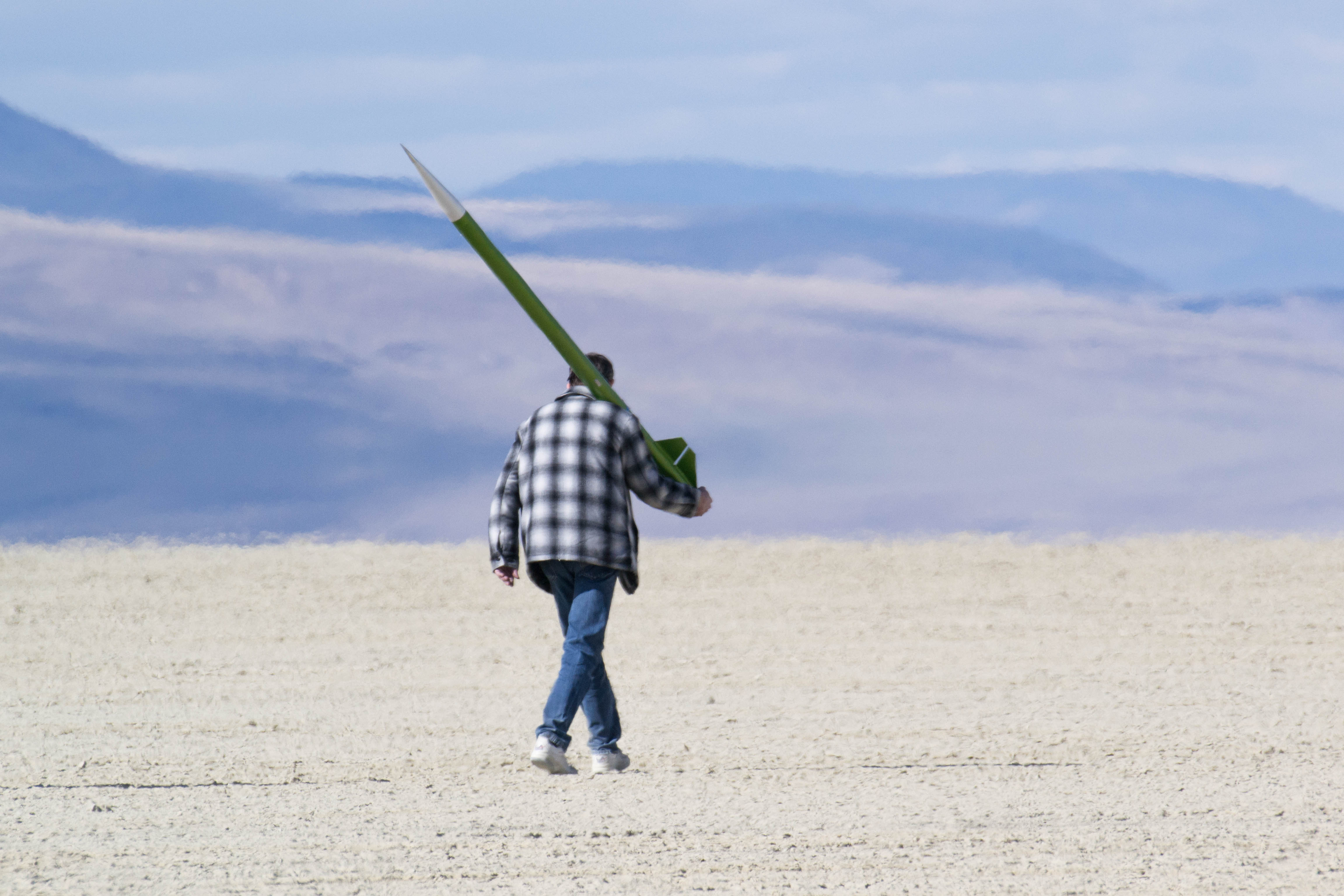
Between 1999 and 2009, Tripoli and the National Association of Rocketry were embroiled in a legal battle with the Bureau of Alcohol, Tobacco, Firearms and Explosives (BAFTE) over their right to use ammonium perchlorate composite propellant (APCP), the most common type of solid-fuel used in high-powered rocketry. The rocketry associations wanted the BAFTE to remove APCP from its list of controlled explosives on the grounds that it made the hobby excessively difficult to pursue. They argued it didn’t belong on the list in the first place since the fuel burns at a controlled rate, rather than explodes.
In 2009, the courts decided in favor the rocketry associations and the BAFTE no longer categorizes APCP or black powder used in rocketry as a controlled explosive. This means that rocketeers are able to use and manufacture APCP for their rockets without needing to get a license from the bureau.
Read More: Watch the Silent Film that Brought Rocket Science to the Masses
Despite the victory, the legal battle took a toll on BALLS. As a 2006 report in The New York Times noted, “since the Sept. 11 attacks, the extreme rocketeers have seen their ranks dwindle. In many parts of the country, rockets are prohibited. Local groups face a welter of ordinances and safety codes, as well as FAA restrictions.”
Although the rocketeers won the battle for their fuel, today they still struggle for legitimacy in the eyes of federal agencies like the FAA. As many of the rocketeers I spoke to told me, BALLS has come under “increased scrutiny” from the agency and the rocketeers are extra cautious to make sure they are on their best behavior. But they don’t let the ever watchful eyes of the feds detract from the fun and experimental nature of the event.
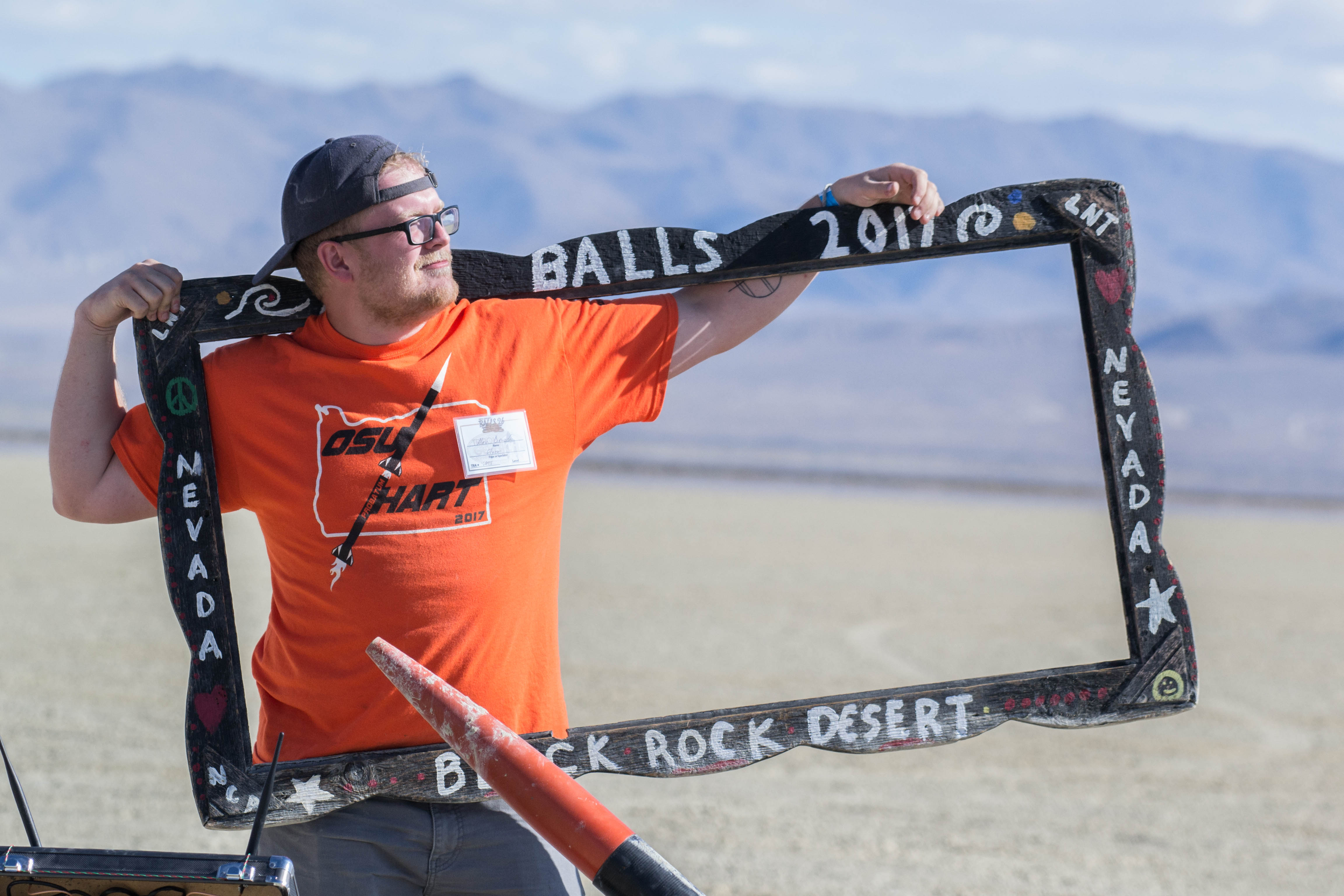
BALLS harkens back to the earliest days of rocketry experimentation, when the likes of Hermann Oberth and Wernher von Braun pioneered amateur rocketry in Germany with the Society for Space Travel in the early 20th century. Without the ability to freely experiment with rocket technologies, some our species’ greatest technological achievements—from NASA landing on the moon to SpaceX landing orbital rockets—would never have been possible. BALLS’ youngest members use the event as a launch pad to continue to profoundly shape our future in space.
According to Nancy Squires, a senior aerospace instructor at Oregon State, the university didn’t even have a rocketry program as of five years ago. When a few enterprising students approached her in 2012 with an interest in building rockets, she helped create an extracurricular rocketry program that has since grown into a full-fledged minor at the school.
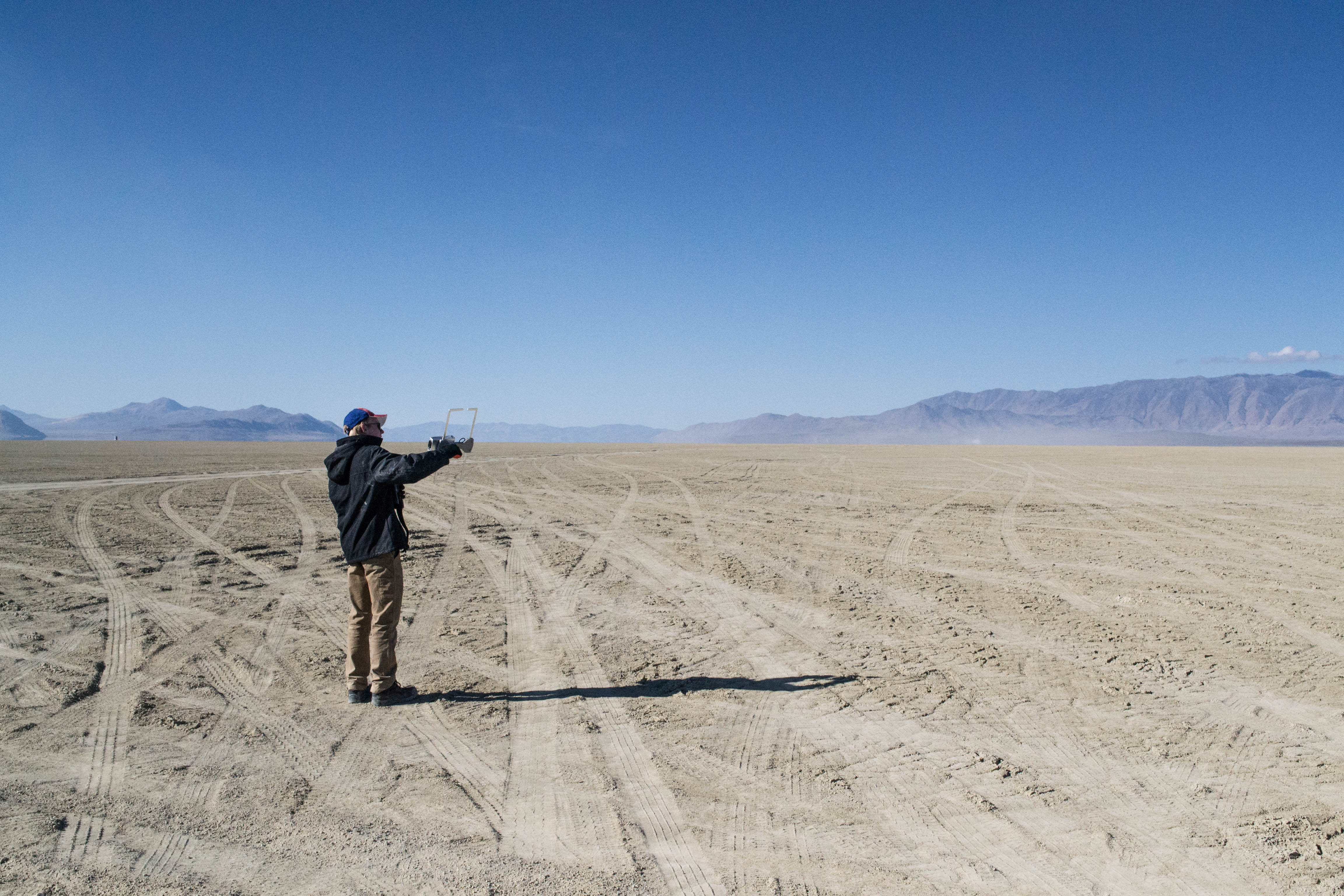
The rocket flown at BALLS by the Oregon State students this year was developed as part of that curriculum, and represents a year’s worth of student-led design and construction. Students I spoke to told me they’re preparing to interview at companies like SpaceX, Blue Origin, and Orbital ATK, where they may have a hand creating the rockets that will one day carry astronauts to Mars or cargo to Moon colonies.
As Squires pointed out, none of this would have been possible without the opportunity for the students to fly their rocket and collaborate with other like-minded rocketeers. Most states and student rocket competitions don’t allow rocket flights above 50,000 feet or rockets flown on student designed motors, a real damper on innovation.
“The culture that Tripoli fosters is amazing,” Squires said. “Half of these students are now in the process of interviewing for jobs and one of the things they talk about a lot in their interviews are projects like this, which would be impossible without the opportunity to launch to 100,000 feet. Where else in the country can you do that if not here?”